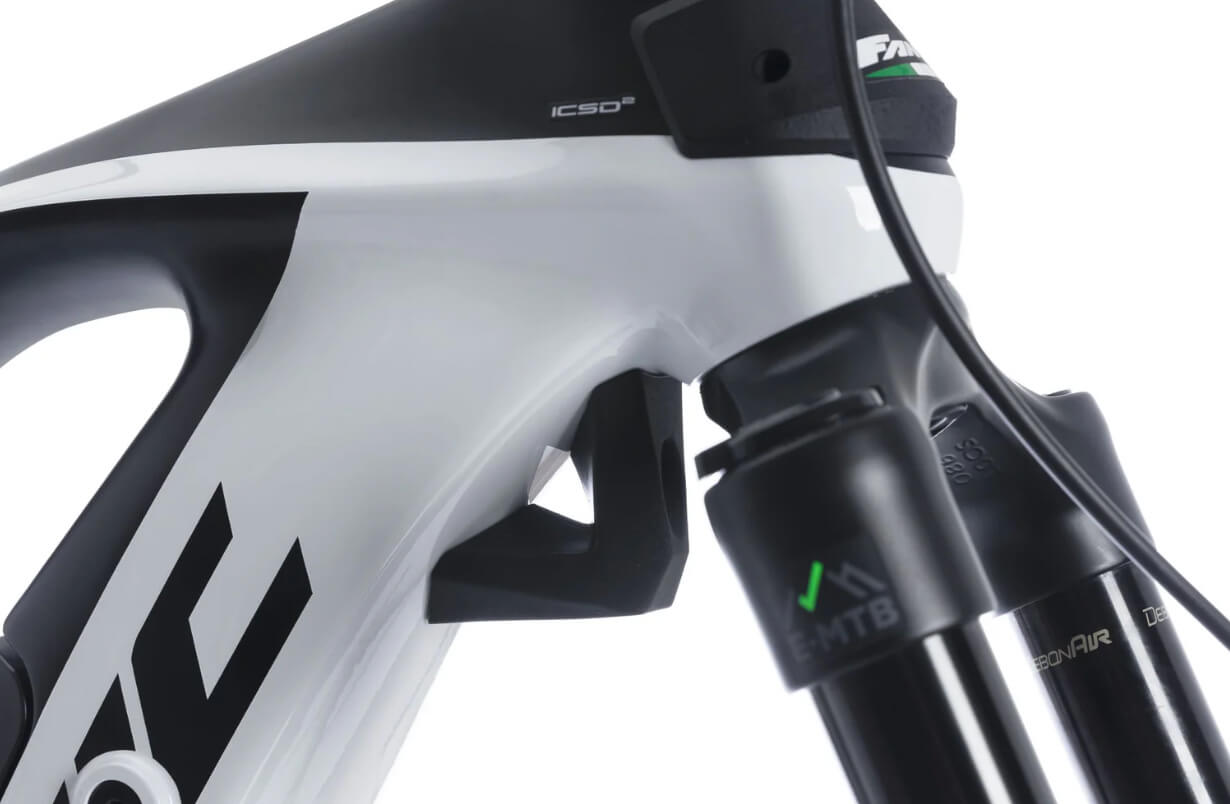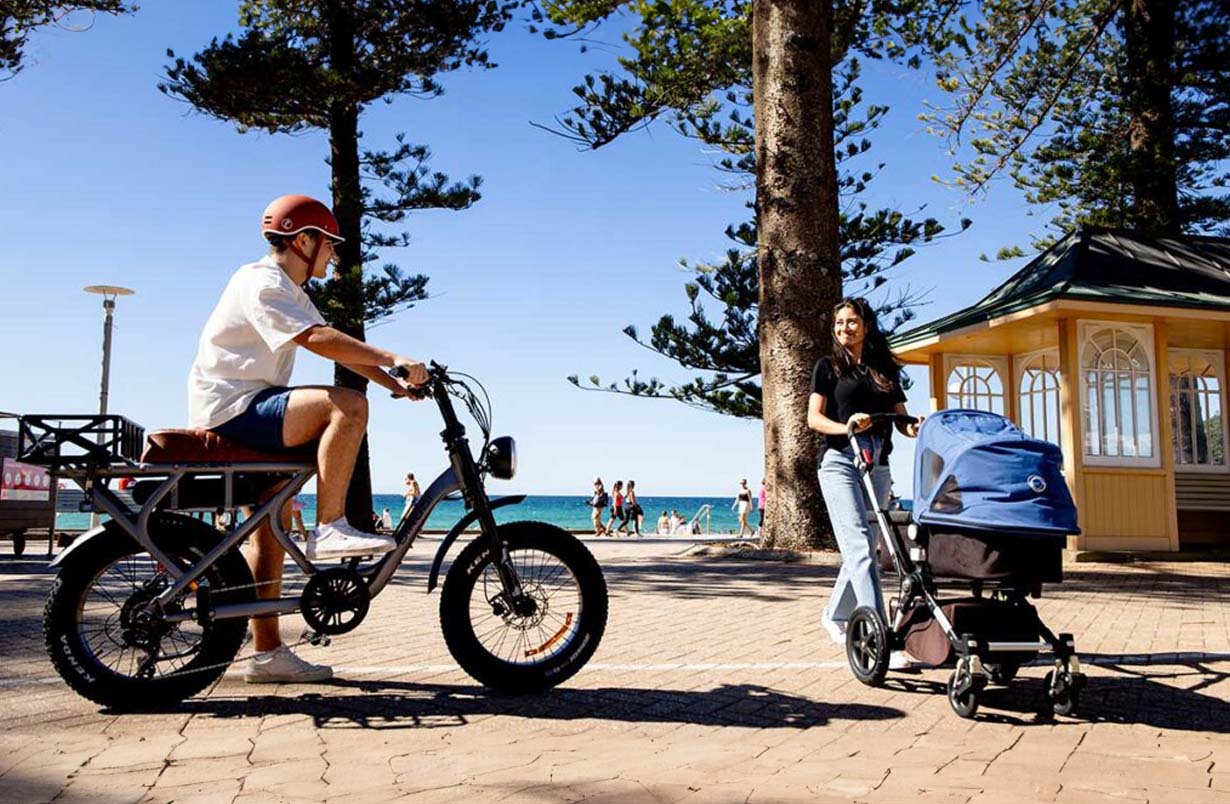Fat Bikes & Scramblers: Sydney's Beachside Revolution
G'day beach lovers! If you've been cruising the Northern Beaches or Bondi lately, you've probably spotted those chunky-tyred beasts rolling across the suburbs from sunrise to sunset. Fat bikes and scramblers have gone from rare sights to must-have toys for Sydney's coastal community. Let's dive into how these rugged rides became the ultimate status symbol for beachside suburbs and which ones you can actually get your hands on locally.
The Colourful History of Scrambler Motorcycles
Before those gorgeous scramblers became Instagram darlings parked outside Bondi cafes and repurposed as ebike replicas, they had a much muddier past. Let's take a quick squiz at how these versatile beauties evolved from hardcore competition machines to the stylish urban-to-beach rides we love today.
The Dusty Origins: 1920s-1940s
Scramblers weren't born in a marketing meeting – they were born in the mud! Back in the 1920s and 30s, motorcycle "scrambling" referred to off-road racing where riders would literally "scramble" to navigate rough terrain. Our British cousins would take standard road bikes, strip off unnecessary bits, raise the exhaust pipes to avoid water crossings, and chuck on knobbier tyres. These weren't purpose-built off-roaders – just regular bikes modified to handle the rough stuff.
The first real scrambler races in the UK evolved into what we now call motocross, while in the States they developed into desert racing. Aussie riders, never ones to miss out on the fun, created their own versions suited to our unique landscape, often modifying British imports from Norton, BSA and Triumph.
The Golden Era: 1950s-1960s
By the 1950s, manufacturers caught on and began producing factory scramblers. Triumph's TR5 Trophy and TR6 Trophy became legendary models, while companies like BSA, Norton, and Matchless got in on the action. Even the Yanks joined the party with Harley-Davidson producing the Sprint.


These weren't just competitive machines – they were proper dual-purpose bikes for the everyday rider who might need to traverse a creek on the way to the pub. The high-mounted exhaust pipes, minimal bodywork, knobby tyres, and higher ground clearance became the signature scrambler look.
In Australia, these bikes were particularly practical given our vast rural areas and unsealed roads. A good scrambler was worth its weight in gold on a cattle station or for accessing those secret fishing spots.
The Decline: 1970s-1990s
As the 70s rolled around, purpose-built motocross and enduro bikes with long-travel suspension began replacing scramblers in competition. Japanese manufacturers like Honda, Yamaha, and Suzuki dominated with lightweight two-stroke dirt bikes that left the heavier scramblers in the dust.
The traditional scrambler seemed destined for the history books as motorcycling became increasingly specialised. Street bikes got sportier, off-road bikes got more extreme, and the middle-ground scrambler fell out of fashion faster than mullet haircuts.
The Renaissance: 2000s to Today
Like vinyl records and facial hair, everything old eventually becomes new again. The scrambler revival kicked off in earnest around 2006 when Triumph reintroduced the Scrambler model. But it was Ducati's entrance into the category in 2015 that really ignited the modern scrambler craze in Australia.
Today's scramblers have returned with a vengeance, combining retro styling with modern technology. They're more about lifestyle than competition – perfect for cruising from Manly to Palm Beach, with the option to take detours further beyond along some gravel tracks.
In Sydney's beachside suburbs, these bikes have found their spiritual home. With their upright riding position, they're comfortable for navigating traffic, while their off-road capabilities make them ideal for beach access and fire trails. Plus, let's be honest – they look bloody fantastic parked outside The Boathouse.
Modern scramblers available in Australia come from diverse manufacturers:
- Triumph continues the tradition with their Scrambler 900 and 1200 models
- Ducati's Scrambler lineup offers Italian flair with multiple variants
- Royal Enfield's Scram 411 provides an affordable entry point
- BMW's R nineT Scrambler brings German engineering to the category
- Fantic offers the Caballero Scrambler with Italian styling
- Moto Guzzi's V85TT adds a scrambler-adjacent option

Fat Bikes: How the Yanks Gave Us Those Chunky-Tyred Beauties
Fat bikes weren't born in some fancy corporate lab – they emerged from the frozen backwaters of Alaska in the 1980s. These crafty Alaskan blokes wanted to keep riding through their ridiculous winters, so they started experimenting with custom-built frames and welding multiple bike rims together to create wider wheels. Talk about a bush mechanic solution!
By the early 1990s, a bloke named Mark Gronewald from Wildfire Designs Bicycles in Alaska teamed up with another fella, John Evingson, to refine these contraptions. They actually coined the term "fat bike" while flogging their "Fat Tyre Bikes" to adventure-hungry customers.
The real game-changer came in 2005 when Surly Bikes (a bunch of cycling tragics from Minnesota) released the Pugsley. This was the first production fat bike available to regular punters, and it kicked off the whole fat bike craze. Instead of being cobbled together in some shed, suddenly you could walk into a bike shop and roll out on proper factory-made fat wheels.

As snow riding took off, more US based companies jumped on the bandwagon. Salsa Cycles dropped the Mukluk in 2010, and by 2012, even the big players like Trek and Specialised were pumping out their own fat bikes. What started as a niche snow toy was suddenly everywhere.
The real surprise? These bikes turned out to be bloody brilliant on all sorts of terrain – not just snow! Sand, mud, rocky trails – you name it, these chunky tyres could handle it. Before long, fat bikes escaped the frozen north and spread across the US, from the sand dunes of California to the slickrock of Utah.
By 2014-2015, the Yanks were going absolutely fat-bike mad, with sales skyrocketing and dedicated fat bike events popping up faster than you could say "oversized tyres." Then came the electric versions around 2016, and suddenly these already capable bikes became accessible to riders of all fitness levels all around the world.
Fat Bikes: From Manly to Maroubra
While scramblers rule the roads, Electric fat bikes inspired by the scrambler motorbike and the North American Fat Tyre Snow bike have conquered Sydney's golden sands. As mentioned, with their oversized tyres (typically 4" or wider), these bikes were initially designed for snow in North America but found their perfect Australian home on our beaches.
The real game-changer has been the rise of electric fat bikes, perfect for Sydney's hilly coastal suburbs and long beach stretches. No more arriving at work sweaty after pedalling up the hills from Bronte or Freshwater and parents love the fact they can save on buying their teenager a car and instead share with them [more affordable] early indepedence on an ebike.
As Sydney continues to battle traffic congestion and parking woes, fat bikes and scramblers offer beach-side residents a practical and stylish alternative. With more dedicated bike paths being developed along our coastline and dealers expanding their showrooms in beach-adjacent suburbs, the chunky tyre revolution shows no signs of slowing down.
Spotlight on Trendsetting E-Bike Brands
Super73: The Original Street Cruiser
No discussion of beach-ready e-bikes would be complete without mentioning Super73, the California-born brand that essentially created the electric motorbike-inspired category that's now taking Sydney's beach-side suburbs by storm. Founded in 2016 through a Kickstarter campaign, Super73 brought their signature retro-inspired design to Australia in 2020, with models now available through selected dealers, such as Ben Buckler
The Super73-S2, with its distinctive frame and motorcycle aesthetics, has become particularly popular with the Bondi and Coogee crowds who appreciate its blend of performance and head-turning style. While initially facing supply challenges in Australia, the brand has established a solid presence with local support and a growing community of riders organizing regular meetups at Manly and Maroubra beaches.
AMPD Bros: The Aussie Contender
While many e-bike brands come from overseas, AMPD Bros represents true-blue Australian innovation. Founded by two brothers from Queensland in 2019, this Gold Coast success story has quickly expanded its dealer network to include Sydney locations such as our showroom of Beaches Electric Bikes at Narrabeen
Their ACE model has become particularly popular with Northern Beaches residents looking for a bike that can handle both urban commuting and weekend beach adventures. With a focus on robust construction suitable for Australian conditions and excellent local backup, AMPD Bros has built a loyal following among Sydney's coastal community who appreciate the availability of parts and local warranty support.

Dirodi: The Accessible Option
For those looking to join the e-bike revolution without breaking the bank, Dirodi has emerged as the value brand of choice for many first-time riders across Sydney's beachside suburbs. Available online and through retailers like Beaches Electric Bikes at North Narrabeen, Dirodi's Rover model offers an accessible entry point, in vintage aesthetic, while still providing the fat tyres and powerful motor needed for sand and coastal paths.

Particularly popular with high school and university students from Cronulla through to the Northern Beaches, Dirodi has found its niche by offering direct-to-consumer and dealer network sales with local support. Their accessible models have introduced hundreds of Sydney residents to the joy of electric fat biking, and even inspired young punk bands to write songs about them
REVER: Italian Flair
REVER are a team of passionate cyclists with Italian and Australian roots, bringing together love for design, adventure, and the great outdoors. While they take business seriously they believe cycling—especially on their signature fat bikes—should be seriously fun.
Their Summit and Safari models offer dual suspension electric fat bikes with BMX style handlebars and an integrated battery. Style and comfort combine to give riders an awesome way of getting around.

Why Sydney's Beach Suburbs Are Going Fat
The appeal of fat bikes in Sydney's coastal areas isn't hard to understand:
- Speedy rides from Bondi to Bronte or Manly to Palm Beach, getting to school, getting to sports events and training, saving time and money for all in the family
- Easy parking in notoriously difficult areas like Manly, Bondi and Coogee
- Avoiding the weekend traffic nightmares on Sydney Road, Military Road or Old South Head Road
- Environmentally friendly transport that aligns with the coastal lifestyle
- Comfort and stability and the ability to have a friend or family member on the back!
Whether you're commuting from Freshwater to school, Narrabeen to Mona Vale, Manly to the city or just want to be part of the Sunday morning Bondi Beach scene, an electric fat bike or scrambler has become as essential to Sydney beach living as sunscreen and a good coffee.







